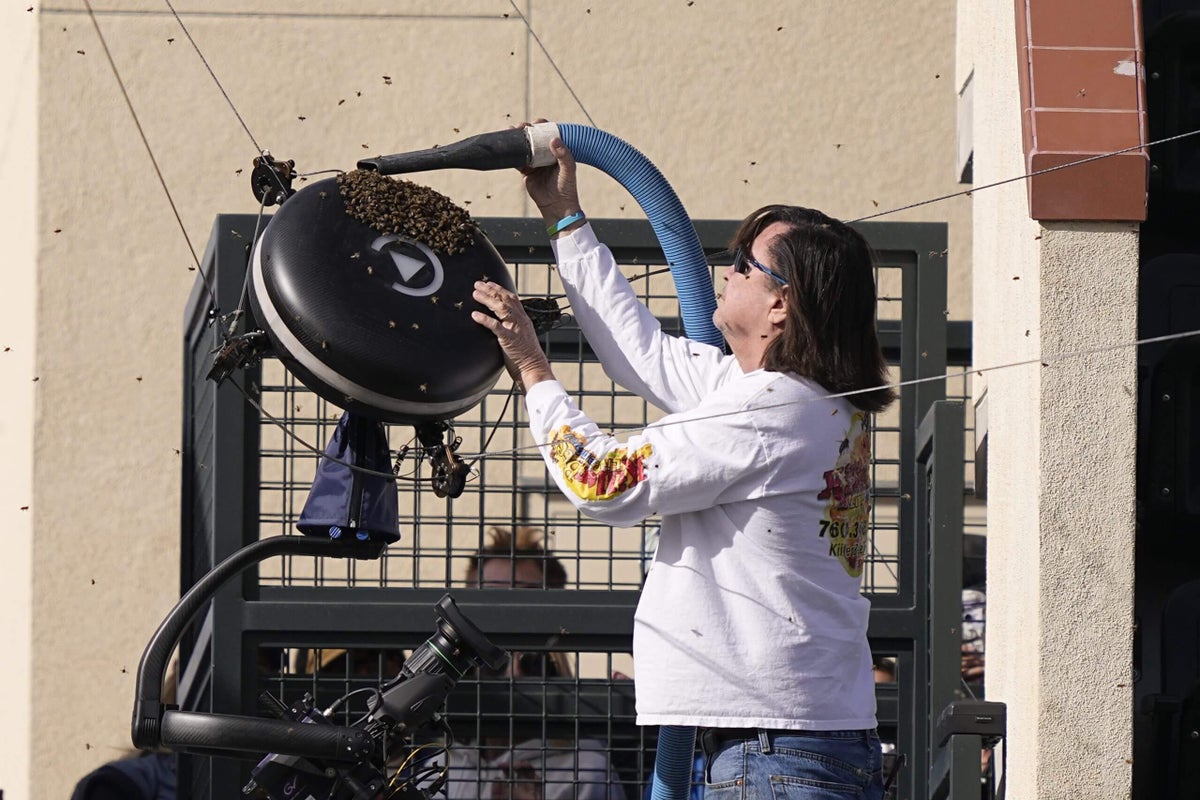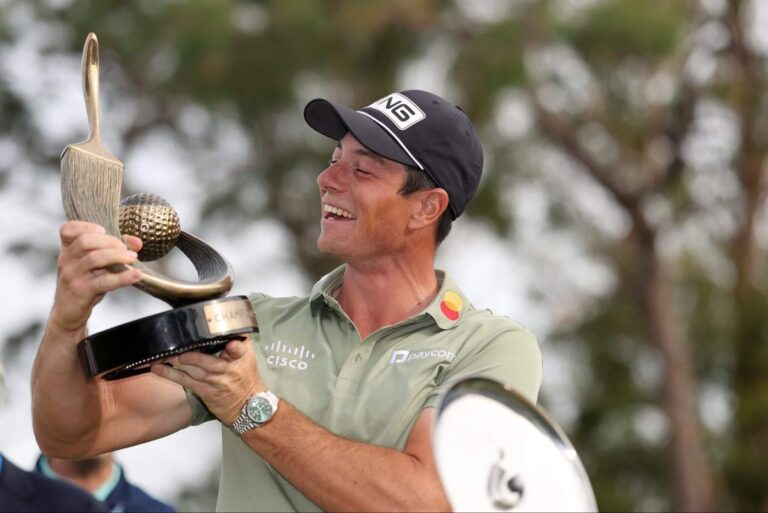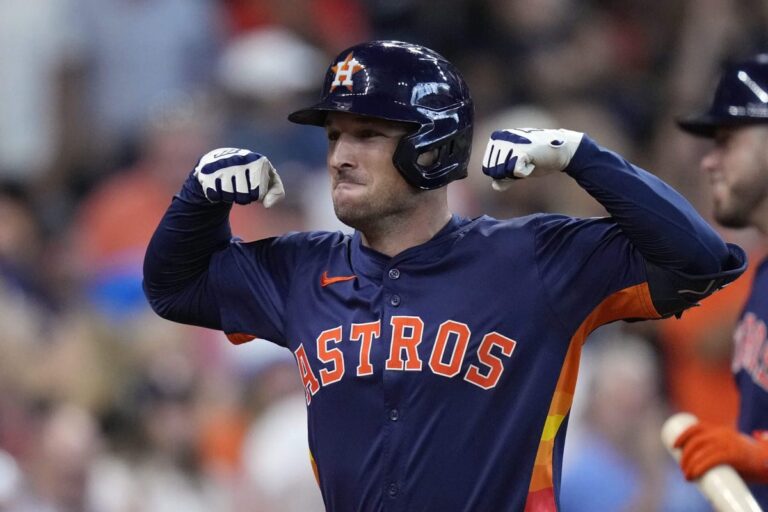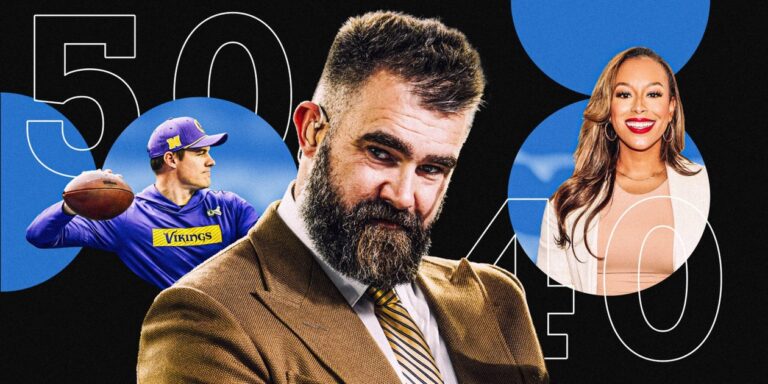Happy holidays, and prepare for the greatest gift: tennis returns tomorrow, December 27. In the spirit of looking back on the previous season and remembering all the moments big and small that defined it, here is a compendium of tennis stories of all kinds from The Athletic’s tennis writers, Matt Futterman and Charlie Eccleshare, with a few guest appearances. This is not a “best of,” but rather a “remember when?” and a “did that really happen?” as well as an opportunity to revisit the stories you may have missed.
There is nothing quite like a comeback in tennis, a game that essentially punishes players for time away. Ranking points disappear. There is no job protection the way there might be for an athlete in a team sport, with an organization committed to managing a rehabilitation, if only to salvage value from a contract. There are no practice starts without consequences in the minor leagues to ease the transition back to top-tier competition.
For older players, the game, the practice sessions, the matches, they all hurt more.
Mirra Andreeva showed up to tennis in the middle of last season, like the new kid at school whose mother or father has just been transferred into the local branch office. One day, no one had ever heard of her, the next, she’s all anyone is talking about: 16 years old, three days into the online version of her junior year in high school, complaining about the homework and taking over this Australian Open.
There was Andy Murray (or was it an actor named Fraser McKnight?) looking very serious, sitting for a tell-all interview. “The players, the matches, it’s all just made up,” he said. “Let’s face it, people are stupid, so they’ll buy anything.” There was Novak Djokovic coming clean about his true identity as the actor Bert Critchley, practising ripping his shirt in front of a bathroom mirror and discussing his process of getting into character. “I want to bring truth to Novak,” he said. “What is he thinking, what is he feeling, what would motivate him, if he was a real person?”
Maybe one day his name will become household. Or maybe not. Tennis is a difficult business; only a tiny sample size of its athletes achieve enough to become part of the vernacular. But what Top Nidunjianzan already has done is extraordinary. In the 50 years since the ATP Tour started its singles ranking system, not a single player from Tibet had earned a single ranking point. Nidunjianzan has 20 of them and ranks 869th in the world.
For several minutes, Alcaraz stood in the center of the court in his warm-up jacket, conveying his fears to Davis and a tournament supervisor. They assured him the random flying bee he might still see was harmless. “If I see the bee, I cannot concentrate on the ball,” he told them. Both are yellow after all.
No one will ever know whether tennis would have experienced a surge in popularity had more of the best players let in the cameras the way some of the biggest stars in F1 and golf have in recent years for Drive to Survive and Full Swing, the golf equivalent. Still, in many ways, the failure of Break Point revealed some of the long-running fractures and countervailing interests throughout tennis, especially at a time when the best players treat access to their lives as their intellectual property.
We do compete in many countries that certainly reflect different cultures and value systems. We certainly understand and respect that Saudi is something that provokes some very strong views.
Challengers may not really be a tennis movie — but it has plenty to say about the quintessence of the sport.
One normal day of Corentin Moutet, that’s all we ask. It will never happen.
Initially, it was thought that the bottle might have been thrown deliberately because footage of the incident obscured where the bottle had come from. However, video shows the bottle slipping out of a spectactor’s backpack as they bend over to attempt to get the attention of the 24-time Grand Slam champion.
The knee-jerk reaction is that women don’t bring in as much money as the men and if they did, they wouldn’t be second-class citizens. Yet consider a counter-narrative: during the 55-year history of the sport’s modern era, if women had received the same exposure and investment as men and didn’t have to confront countless barriers and aggressions, maybe they would be bringing in the same amount of money.
The dominance becomes self-fulfilling once she wins a few games and she and her opponent both feel like they know what’s coming next, so the starts and ends of points become more inevitable; what happens in between is less important.
The world of invention is full of products and gadgets intended for one purpose that found their groove with another. Bubble wrap was supposed to be three-dimensional wallpaper. Viagra was a new blood pressure medication. The slinky was a surefire way to secure naval instruments in rough seas. Umpire-Head-Camera, welcome to the ranks of unintended consequences.
Most people’s jobs don’t involve travelling the world to play a very selfish sport in front of thousands of people, sometimes with — or even against — your partner.
How did that chirpy teenager suddenly get to this middle-age existence, wife and kids and in-law dinners, wearing the status of millennial tennis wise man? Where does life, his and ours, go?
Muchova has come from a place that no tennis player wants to go. After that surgery in February, on the area of the body tennis players most dread becoming damaged, Muchova worried she might not play the sport again.
Something about the human backboard nature of her play, the hard (but not too hard), flat power of ball after ball after ball opposing off her racket. The beauty of her game, her economic and elegant movement, and the subtle scything of her forehand almost go unnoticed. She is plenty steady, sure, but that doesn’t begin to describe her. Stealthy is more like it.
Sabalenka can be funny and bubbly off the court but has a temper to match her athletic gifts on it, and an obduracy that follows her out of the tramlines too. When the stress ramped up, she would get so hot she could barely breathe or function, let alone serve. That is when it helps to have someone with a background in martial arts: a discipline in controlling your breathing and your emotions when you are facing someone beating the crap out of you.
Both are so quick that they look like they could be Olympic sprinters, and where Alcaraz lunges and bends like his limbs are putty, Sinner dives and twirls like a superhero escaping from a burning building.
Forlan expected to spend much of his retirement honing his golf game, but instead has found himself drawn back to tennis. Nothing else gives him the same satisfaction as the sport that, along with football, he excelled at in his youth.
When the WTA go to Saudi, I would say they should adopt a political prisoner’s case and take it on and say ‘OK, we’re going, but we are also advocating for them. And Manahel al-Otaibi (the jailed fitness instructor) is the closest case you could have to sports. Say, ‘We are happy to be in Saudi. We’re happy that Saudi women are to now play tennis. But what about Manahel al-Otaibi?’”
Jannik Sinner is trying to speak, but his own name is resounding too loudly across the Inalpi Arena in Turin. Lit up on billboards, written on placards, chanted across the aisles. Sinner, the first Italian to achieve the men’s world No. 1 ranking, isn’t just the featured attraction of the ATP Tour Finals tournament in his home country: He is the tournament, on the court and off it.
Instead of letting her serve become a complete albatross, Errani has used her ground skills, tactical nous and the shock factor of a serve that regularly registers around 60mph (96.5kph) on the speed gun to reach the very top of tennis in singles and doubles.
For two decades, whatever outrageous fortune controls tennis injuries kept slinging arrows at Rafael Nadal. When the Spaniard finally raised his white flag last month, he admitted defeat to an opponent he had vanquished not just in his later years but for two decades, until he couldn’t win the battle any more.
I wasn’t alone, she said. It wasn’t something wrong with me.
I was like, ‘Oh my god, it’s my boyfriend’s birthday. Like happy birthday. I love you.’ And then, boom! It was so normal for me that I didn’t think about it.
Source link




